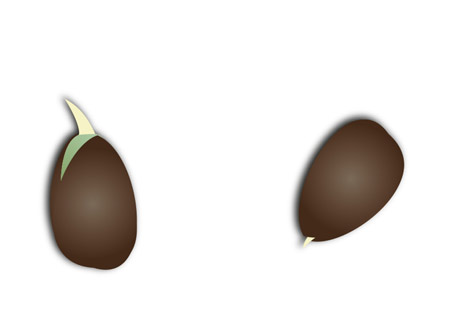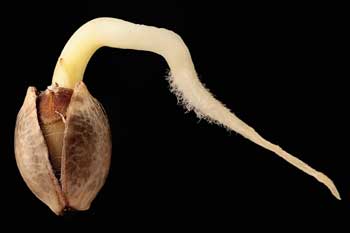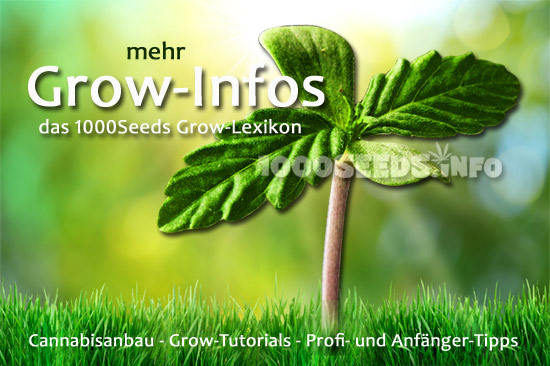Basically, all cannabis plants whether fibre hemp or THC-rich cannabis are classified as cannabis sativa. According to the professionals who have officially classified cannabis, cannabis sativa is the only type of cannabis. The growing and professional world distinguishes between Cannabis sativa and Cannabis Indica or Cannabis ruderalis. However, just because sativa, indica and ruderalis differ significantly in some characteristics such as smell, taste and, above all, effect and growth characteristics, does not mean that they are actually different species from a botanical point of view.
Scientific research has shown that the sativa gene pool includes landraces from Europe, Asia Minor, Central Asia and a ruderalis population. The indica gene pool includes landraces from East Asia, South Asia, South America, Africa and also genetic proportions of varieties from Pakistan, Afghanistan and also India and Nepal. (Genetic evidence for speciation in Cannabis (Cannabaceae) Karl W. Hillig). The cannabis plant had managed to travel around the globe early in history, even without human intervention. Seeds were carried by the wind, spread by birds (poop) and attached themselves to animals travelling long distances. This is how natural mixing occurred. So much for the background.
However, from the point of view of the grow world and seed banks, for the sake of better classification and as far as the characteristics of individual strains are concerned, it makes sense and is common practice to distinguish between the following cannabis types:
Sativa
Originates mainly from Asia, Africa and America. Depending on the area of origin, they can have different specific characteristics. However, they all have in common a tall growth, with long internodes, a very extensive root system, large narrow-fingered leaves and usually a significantly longer flowering time compared to Indicas. Pure sativas often grow too tall indoors and then cannot be lit efficiently. Outdoors, they generally deliver very large yields and can become veritable trees with heights of 4m and more.
Sativas mainly have a cerebral, mental, energetic high that makes you happy and stimulates creativity. You don't get tired or heavy from it, or hardly at all, but it can still be very psychedelic depending on the sativa strain.
Indica
Indicas are originally from Afghanistan, Pakistan and India and are often used for indoor growing because they tend to stay small and stocky. They have a compact root system, robust, strong side branches, large broad mostly dark green leaves and thick dense flowers. Indicas generally have a very high THC content. With some Indica varieties, the leaves and flowers take on a purple or reddish colour. The effect is relaxing, heavy, paralysing, also narcotic. The high ranges from sedative to narcotic. The aroma and smell are varied, exotic, fruity, spicy, tart or pungent and earthy.
The Afghanis and the Kushs are counted among the pure Indicas. The very resinous Indicas usually have a high resistance to mould and vermin.
Ruderalis
Cannabis ruderalis is a compact, low-growing plant that contains very little THC. It flowers earlier than its bigger sisters the Indicas and Sativas. Parts of the ruderalis genetics are present in the automatic/auto-flowering cannabis strains today and ensure not only a fast harvest but also an automatic flowering start without light changeover. They usually stay smaller and are easy to grow on terraces or in small grow boxes. In the meantime, countless automatic varieties from the various seed banks have come onto the market and are becoming increasingly popular.
Hybrids
There are now more varieties of cannabis than ever before. Many cannabis varieties that we know and appreciate today are so-called hybrids. This means that these strains are a cross between Cannabis Sativa and Cannabis Indica or Cannabis ruderalis. These hybrids were bred under artificial light and optimised to deliver perfect results for indoor cultivation under artificial light.
The cannabis seed contains the genetic blueprint of the plant and results from the propagation/crossing of a mother plant and a male cannabis plant. The genes contained in the seed determine the size, disease resistance, growth habit, shape, root structure, leaf structure, flower formation, yield, cannabinoid content and many other characteristics of the plant.
If the conditions for indoor growing are optimal and a sodium vapour lamp (or high-power LED) is used, it depends to a large extent on the genetic make-up of the seed. This then determines how much THC a plant produces.
Feminised Cannabis Seeds
There are feminised cannabis seeds and regular cannabis seeds. Feminised cannabis seeds produce 99.99% female cannabis plants that develop potent buds. In 1998, the Dutch Passion seed bank was the first to introduce feminised seeds to the market.
Many growers now turn to feminised cannabis seeds because they are easier to handle. You don't have to find out the sex first and you don't have to worry about male plants in the growroom pollinating the female plants and reducing their potency. Feminised cannabis strains today give excellent results in very potent and large harvests. Many seed banks now exclusively carry feminised cannabis strains.
Regular cannabis seeds
Regular cannabis seeds can produce female and male plants. They are used for breeding purposes and are recommended if you want to produce cuttings yourself. Regular seeds later produce the strongest and also longest-lived mothers. There are some growers who consider plants from regular seeds to be more potent and hardy. With regular seeds, once flowering has been initiated, it is necessary to keep a close eye on the sex of the plants in order to identify male plants early on and remove them from the growroom. This is basically quite simple and you will quickly learn to distinguish between the two sexes. Even if it looks a bit difficult at the beginning, you will recognise and find out. You can read more about this in our articles on "Distinguishing the sex of cannabis".
The cannabis seed contains the genetic material and is also equipped with its own nutrient reserve and a protective outer shell. Ripe seeds are mostly dark brown to beige, hard and can also have a spotted shell. Green, soft seeds are not yet ripe and germinate less well or not at all. Tried and tested seed banks supply high-quality seeds that are germinable across the board. Seeds should be stored in a cool, dark and dry place (in the refrigerator). Seeds can remain germinable for up to 5 years if stored correctly.
Germination
All you need to germinate cannabis seeds is water, air and heat. With the right humidity and a temperature of 21-30°C, most seeds will germinate after 2-7 days. Temperatures above 31°C can have a negative effect. Therefore, seeds should not be placed directly on the heating or similar for germination. When germinating, the protective shell bursts open and a small white sprout, the radicle, can be seen. Next, the cotyledons are formed and push through the shell towards the light.

There are Different germination techniques. In our articles you will find detailed descriptions and also a lot of useful information about the topic Troubleshouting during germination and important tips for correct germination.
The most common problem with germination is too much water. The substrate should be evenly moist, but not dripping wet. Excess water must always be able to drain off well, even if rock wool is used for germination. In the beginning you should only water drop by drop or with a sprayer, then when the surface has dried to a depth of approx. 3mm. Seedlings cannot absorb much water with their mini-roots.
Seeds and germination
- regular or feminised seeds?
- Germinate seeds
- Troubleshooting during germination
- Germinating seeds & raising seedlings: a few extra tips
- the first days
Seedshop
- regular cannabis seeds
- feminised cannabis seeds
- automatic/autoflowering cannabis seeds
- medicinal cannabis seeds
- Varieties for indoor
- Varieties for outdoor
- Sativa
- Indica
- Kush Strains
- Haze-Strains








